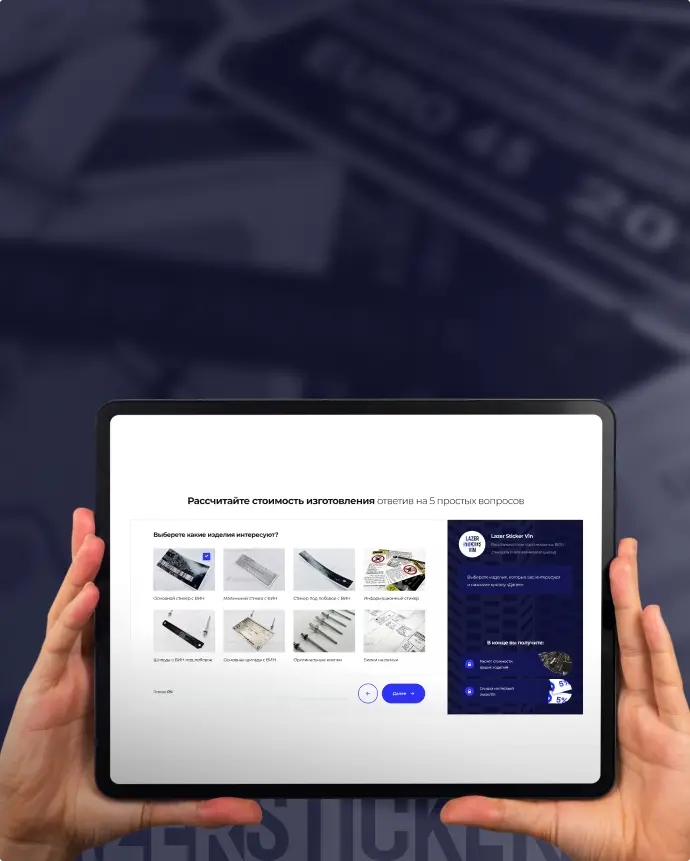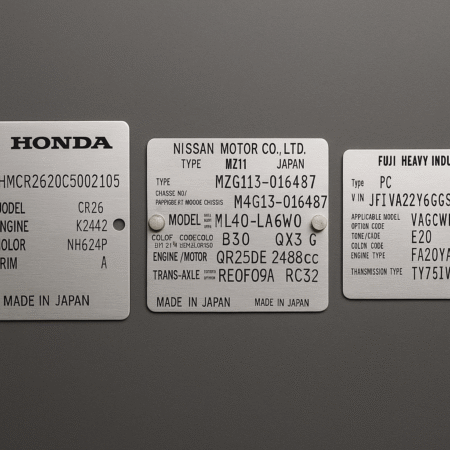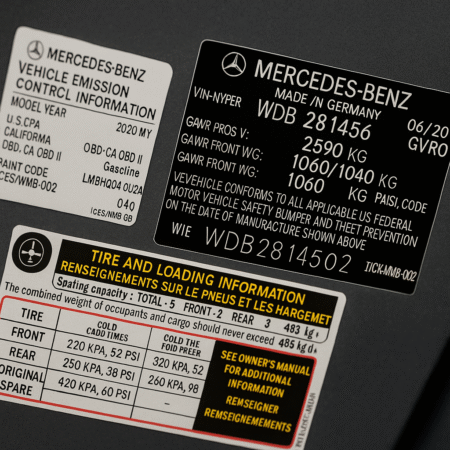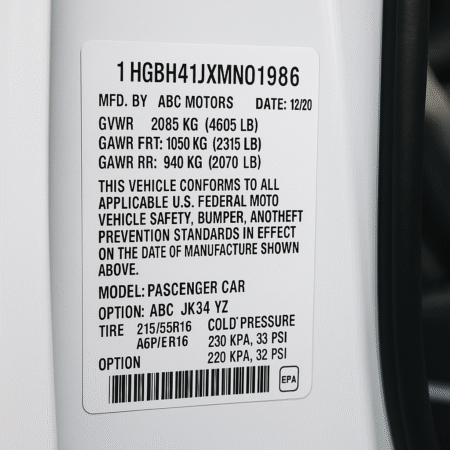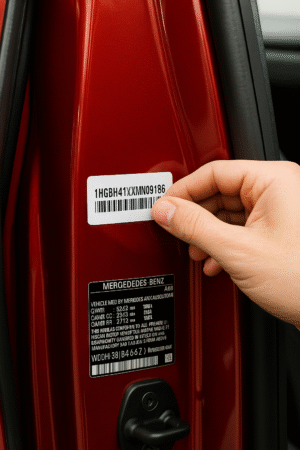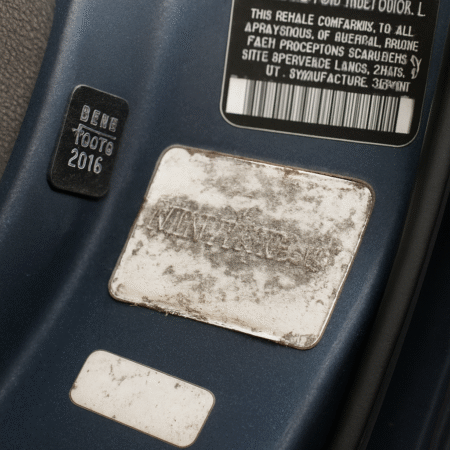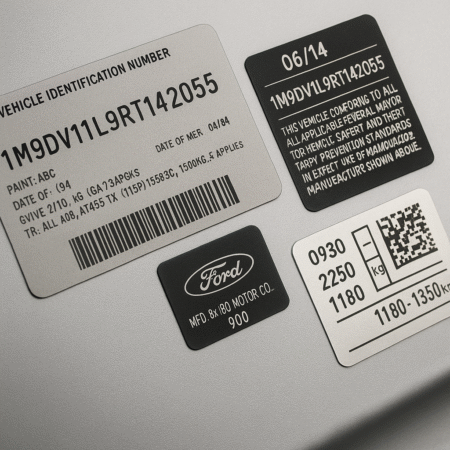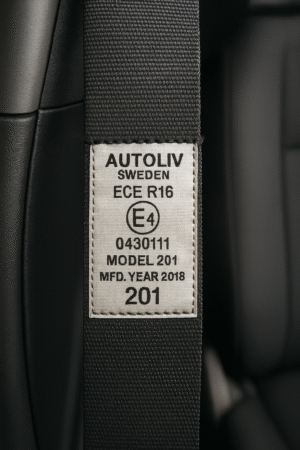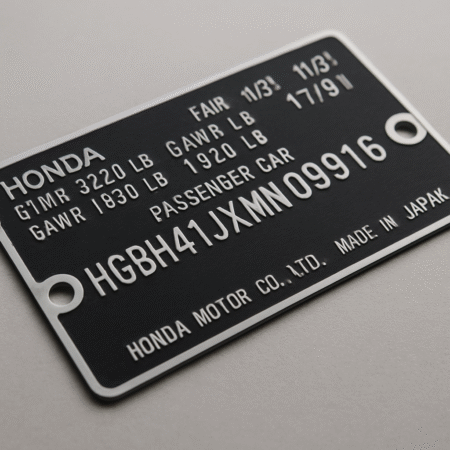How to Spot a Fake VIN Sticker: Key Differences from the Original
A VIN sticker is more than just a label — it’s an official identifier used in vehicle registration, insurance, customs clearance, and even border crossing. Unfortunately, counterfeit VIN stickers are not uncommon, especially on the used car market. In this article, we’ll explain how to recognize a fake, what to look for in a genuine sticker, and what to do if yours seems suspicious or is missing.
Why Are VIN Stickers Forged?
Fake VIN stickers usually appear in the following scenarios:
- To alter vehicle history (e.g., rolled-back mileage, fake documents)
- After accidents or body repairs, when the original sticker is lost
- During illegal imports, especially from auctions or salvage yards
- To cover up theft or criminal background
While counterfeit stickers may look convincing, even minor details can expose them to a trained eye.
Where Is the VIN Sticker Located?
The exact location varies by brand and model, but it’s usually found:
- On the driver-side B-pillar (inside the door frame)
- On the dashboard near the windshield (driver’s side)
- Under the hood or on the fender
Genuine stickers are always placed in specific factory-approved locations and may appear in multiple places on the vehicle.
How to Identify a Genuine VIN Sticker
- Material
OEM stickers are made from high-quality vinyl designed to resist moisture, UV, and abrasion. Fakes are often printed on cheap paper or basic film. - Fonts and Dimensions
Factory stickers use strict fonts with exact spacing. Counterfeits often use fonts that are too bold, too thin, misaligned, or uneven. - Finish and Texture
Originals may have a matte or semi-gloss texture, sometimes with security features like microtext or UV-reactive ink. Fakes are often overly shiny and flat. - Security Elements
Some brands (e.g., BMW, Mercedes, Ford) include:- UV-print elements visible only under black light
- Holograms
- Microprinting
- Scannable barcodes or QR codes
- Print Quality
Genuine stickers have even, high-resolution printing. Fakes may show pixelation, blurred text, or ink inconsistencies. - VIN Match Across Vehicle
The VIN on the sticker must match the one stamped on the body, listed in the documents, and found in the manufacturer’s database.
How to Verify a VIN Sticker
- Use a UV light — original stickers often reveal hidden markings
- Compare with other vehicles of the same model — look closely at fonts and formatting
- Check the VIN in online databases (Carfax, AutoCheck) — if the number is valid but doesn’t appear on the vehicle, that’s suspicious
- Consult an expert or certified shop for inspection
What to Do If Your VIN Sticker Is Missing or Damaged
If your sticker is missing, faded, or was damaged during repair — don’t try to print a fake one yourself. That may be considered fraud.
Instead, order a factory-accurate replacement from a professional service.
Why Choose Lazer Sticker VIN?
We create high-precision replicas of OEM VIN stickers:
- Matching materials, fonts, dimensions, and UV elements
- Fade-resistant, tamper-proof, UV-reactive vinyl
- Produced based on a photo, template, or VIN data
- Worldwide shipping in 1–5 business days
Lazer Sticker VIN is a trusted expert in VIN sticker and label reproduction. We help you restore your vehicle’s original factory look and avoid legal issues during inspection, registration, or resale.
